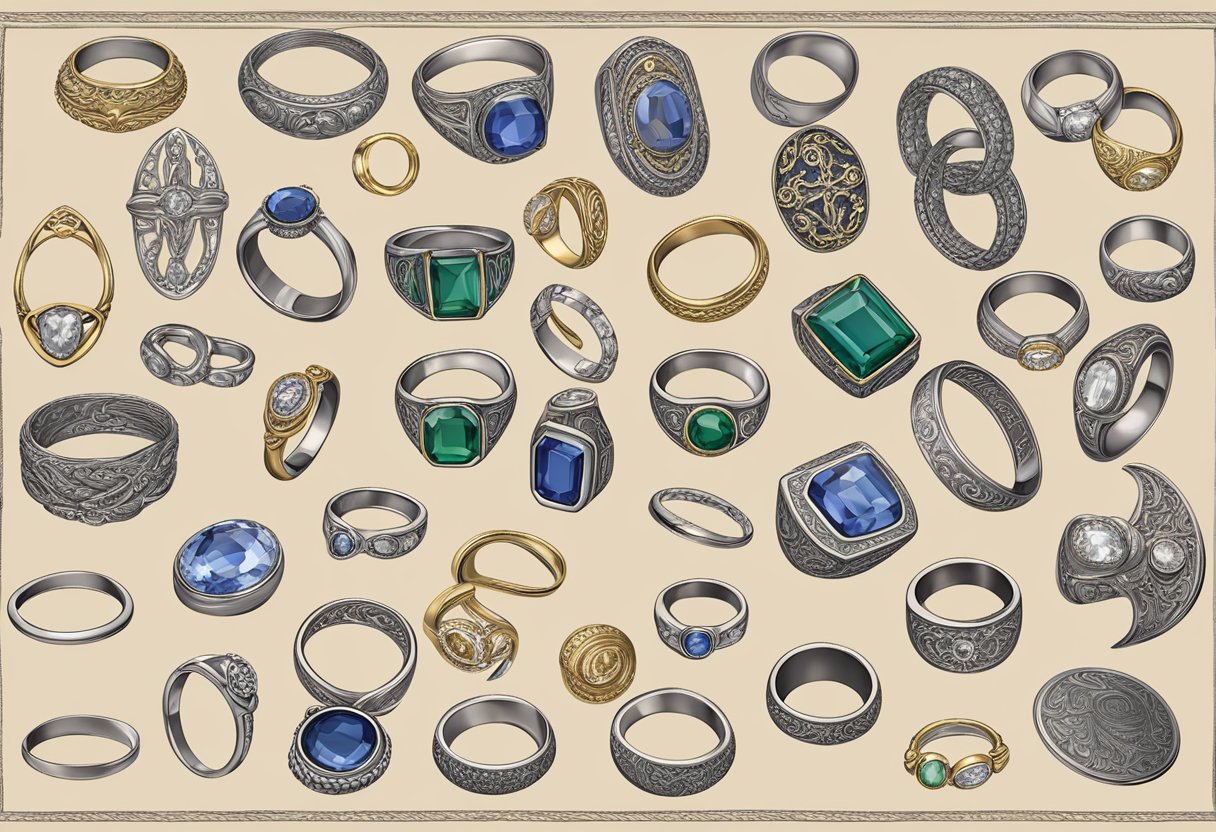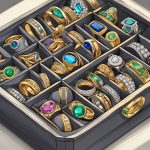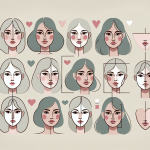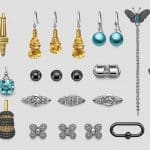Types Of Rings
Rings have been a symbol of love, commitment, and tradition for centuries. From engagement rings to wedding bands, rings hold a special place in our hearts and are often cherished for a lifetime. But did you know that there are many different types of rings, each with its own unique meaning and significance?
Historically, rings have been used to symbolize everything from power and wealth to love and commitment. In ancient times, rings were often worn as a sign of status or authority, while in more recent times, they have become a popular choice for engagement and wedding rings. Today, there are many different types of rings available, each with its own unique design and meaning.
When it comes to choosing the right ring, there are many factors to consider, including the type of ring, the materials used, and the design elements. Whether you’re looking for a traditional engagement ring or a unique piece of jewelry to celebrate a special occasion, there is sure to be a ring out there that is perfect for you.
Key Takeaways
- Rings have been a symbol of love and tradition for centuries.
- There are many different types of rings, each with its own unique meaning and significance.
- When choosing a ring, it’s important to consider factors like type, materials, and design elements.
Historical Significance of Rings

Throughout history, rings have played an important role in various cultures and societies. From signet rings to claddagh rings, these pieces of jewelry have held great significance for their wearers. In this section, we will explore the historical significance of rings, with a focus on tradition, loyalty, wealth, and status.
Tradition and Loyalty
One of the most well-known types of rings is the claddagh ring, a traditional Irish ring that represents love, loyalty, and friendship. The ring features two hands holding a heart, with a crown on top. The hands represent friendship, the heart represents love, and the crown represents loyalty. Claddagh rings are often given as gifts to loved ones, and are worn by people all over the world as a symbol of their Irish heritage.
Wealth and Status
In many ancient cultures, rings were a symbol of wealth and status. Signet rings, for example, were often worn by people of high social standing, and were used to seal important documents. These rings were often adorned with intricate designs and precious stones, and were passed down from generation to generation as a family heirloom.
Antique rings are also highly valued for their historical significance and unique designs. These rings, which are typically over 100 years old, are often sought after by collectors and enthusiasts. They can range from simple bands to elaborate pieces of jewelry, and can be made from a variety of materials, including gold, silver, and platinum.
In conclusion, rings have held great significance throughout history, representing tradition, loyalty, wealth, and status. From claddagh rings to signet rings, these pieces of jewelry have a rich history and continue to be worn and cherished by people all over the world.
Types of Rings and Their Meanings
Rings are not just a piece of jewelry, but they also hold significant meaning and symbolism. From engagement rings to fashion rings, each type of ring has its own unique meaning and purpose. In this section, we will explore the different types of rings and their meanings.
Engagement and Wedding Rings
Engagement and wedding rings are perhaps the most well-known types of rings with a deep meaning. These rings are a symbol of love, commitment, and eternal partnership. Engagement rings are typically given as a proposal for marriage, while wedding rings are exchanged during the wedding ceremony.
The most common engagement ring is a diamond ring, which symbolizes eternal love and commitment. Wedding rings are usually plain bands made of gold or platinum, and they represent the unbroken circle of love and loyalty.
Anniversary and Eternity Rings
Anniversary and eternity rings are given to celebrate milestones in a relationship. These rings are often used to mark a significant anniversary, such as a 10th or 25th wedding anniversary. Anniversary rings can be similar in style to engagement rings, but they can also be more unique and personalized.
Eternity rings are similar to anniversary rings, but they feature a continuous circle of stones that represent eternal love and commitment. These rings are often given to mark a special occasion, such as the birth of a child or a significant anniversary.
Fashion and Statement Rings
Fashion and statement rings are not necessarily given for a specific occasion, but they can still hold significant meaning. These rings are often used to express individual style and personality, and they can also represent friendship and loyalty.
Fashion rings come in a variety of styles and materials, from simple bands to bold and colorful designs. Statement rings are typically larger and more eye-catching, and they can be used to make a statement or express a particular mood or emotion.
In conclusion, rings are a powerful symbol of love, commitment, and individuality. Whether it’s an engagement ring, wedding band, or a fashion ring, each type of ring has its own unique meaning and purpose. By understanding the symbolism behind each type of ring, you can choose the perfect ring to express your own personal style and values.
Materials and Gemstones
When it comes to rings, the materials and gemstones used play a crucial role in determining the overall look and feel of the ring. In this section, we will take a closer look at the different types of materials and gemstones that are commonly used in rings.
Precious Metals
One of the most popular materials used in rings is precious metals. Gold and silver are two of the most commonly used precious metals in rings. Gold comes in a variety of colors, including yellow, white, rose, and even green. Silver, on the other hand, is known for its bright, shiny appearance. Both gold and silver are durable materials that can withstand everyday wear and tear.
Diamonds and Birthstones
Diamonds are perhaps the most popular gemstone used in rings. They are known for their brilliance and are often used in engagement rings. Birthstone rings are another popular type of ring that features a gemstone that corresponds to the wearer’s birth month. These rings can be a great way to add a personal touch to a piece of jewelry.
Other Gemstones
In addition to diamonds and birthstones, there are many other types of gemstones that are commonly used in rings. Sapphires, aquamarine, alexandrite, and zircon are just a few examples. Each gemstone has its own unique properties and can be used to create a wide range of different looks and styles.
Overall, the materials and gemstones used in a ring play a crucial role in determining its overall look and feel. Whether you prefer the classic look of gold and diamonds or something more unique, there are many different options to choose from.
Ring Design Elements
When it comes to selecting a ring, design elements are one of the most important factors to consider. There are a variety of design elements that can be customized to create a unique and personalized ring.
Settings and Cuts
The setting of a ring can greatly impact its overall appearance. Some popular settings include prong, bezel, and tension settings. The prong setting is a classic choice that uses metal prongs to hold the diamond or gemstone in place. The bezel setting is a more modern option that encircles the diamond or gemstone with metal. The tension setting is a unique option that uses the pressure of the band to hold the diamond or gemstone in place.
The cut of a diamond or gemstone can also greatly impact the overall look of a ring. Some popular cuts include round, princess, cushion, and emerald. Each cut has its own unique characteristics and can greatly impact the overall appearance of the ring.
Shapes and Colors
The shape of a diamond or gemstone can greatly impact the overall appearance of a ring. Some popular shapes include round, oval, pear, and marquise. Each shape has its own unique characteristics and can greatly impact the overall appearance of the ring.
The color of a diamond or gemstone can also greatly impact the overall appearance of a ring. Some popular colors include white, yellow, pink, and blue. Each color has its own unique characteristics and can greatly impact the overall appearance of the ring.
Choosing the Right Ring
When it comes to choosing the right ring, there are a few important factors to consider. These include fit, comfort, versatility, and popularity.
Fit and Comfort
One of the most important aspects of choosing a ring is ensuring that it fits comfortably. A ring that is too tight can be uncomfortable and even painful to wear, while a ring that is too loose may slip off or feel unstable. It is important to measure your finger accurately to ensure a proper fit.
Comfort is also important when choosing a ring. A ring that is too heavy or bulky may feel uncomfortable, especially if it is worn for long periods of time. It is important to choose a ring that feels comfortable and lightweight on the finger.
Versatility and Popularity
When choosing a ring, it is important to consider its versatility and popularity. A ring that can be worn with a variety of outfits and styles is a good investment, as it can be worn for many different occasions. A popular style or design may also be a good choice, as it is likely to remain in fashion for many years to come.
Engagement rings, wedding bands, and stackable bands are all popular choices for rings. Engagement rings are typically worn on the left hand and symbolize a commitment to marriage, while wedding bands are typically worn on the right hand and symbolize the union of two people in marriage. Stackable bands are a versatile option that can be worn alone or stacked with other rings for a more layered look.
In conclusion, when choosing a ring, it is important to consider factors such as fit, comfort, versatility, and popularity. By taking these factors into account, you can choose a ring that not only looks great but also feels comfortable and is versatile enough to wear for many different occasions.






